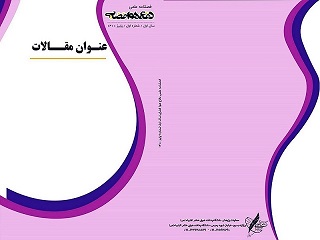نوع مقاله : مقاله پژوهشی
نویسندگان
1 مدیر گروه مواد و پدافند غیرعامل، دانشکده مهندسی مکانیک، دانشگاه پدافند هوایی خاتمالانبیاء(ص)
2 استادیار، دانشکده مهندسی کنترل، دانشگاه پدافند هوایی خاتمالانبیاء(ص)، تهران، ایران
3 کارشناس ارشد عمران سازه، دانشگاه زند، شیراز، ایران
چکیده
با توجه به اهمیت حوزه دفاعی وجود حملات تروریستی نیاز به تقویت سازههای حساس و حیاتی کشور به شدت ضروری است. در این مطالعه دو پارامتر مهم در مقاومسازی سازهها در برابر بار انفجار مورد بررسی قرار گرفته است. در مرحله اول جنس مصالح مقاوم بتنی در برابر بار انفجار و در مرحله دوم شکل هندسی سازهای مقاوم در برابر بار انفجار بررسی شده است. برای تعیین مصالح بتنی مقاوم در برابر انفجار از مشخصات مکانیکی و نمودار تنش کرنش مخلوطهای بتنی ساخته شده در آزمایشگاه برای مدلسازی در نرمافزار المان محدود آباکوس استفاده شد. با انجام مدلسازی عددی، بتن با طرحهای مختلف تحت بار انفجار قرار گرفت و مشخص شد که بتن تقویت شده با الیاف ترکیبی فولادهای ماکرو-میکرو بهترین مقاومت را در برابر بار انفجار از خود نشان میدهد. با تقویت بتن با این ترکیب از الیاف میتوان تا حدود 70 درصد میزان خرابی را در دال بتنی کاهش داد. جهت تعیین شکل سازهای مقاوم در برابر انفجار، دو شکل سازهای مکعبی و نیمکره تحت بار انفجار قرار گرفتند. نتایج نشان داد که شکل سازهای نیمکره مقاومت بیشتری در برابر بار انفجار از خود نشان داده و با تغییر شکل سازه از مکعب به نیمکره، میزان آسیب سازه تحت بار انفجار به میزان 49 درصد کاهش مییابد. همچنین دو سازه نیمکره ساخته شده با بتن شاهد و الیاف ترکیبی فولاد ماکرو-فولاد میکرو، تحت بار انفجار شدید قرار گرفتند و مشخص شد که استفاده از الیاف در این شکل از سازهها به میزان 26 درصد آسیبپذیری را کاهش میدهد.
کلیدواژهها
موضوعات
عنوان مقاله [English]
Reinforcement of structures against explosion by providing suitable structural shape and determining the type of the optimal fibers in concrete mix
نویسندگان [English]
- Mohammad Sepehri 2
- mohammad amin abbasi 3
2 Assistant Professor, Department of Control Engineering, Khatam Ol Anbia University, Tehran, Iran
3 Master of science in Structural Engineering, Zand University, Shiraz, Iran.
چکیده [English]
In this article, two important parameters in the discussion of strengthening structures against blast load have been investigated in Abaqus finite element software. In the first step, the type of concrete materials resistant to the blast load and in the second step, the geometric shape of the structure resistant to the blast load has been investigated. To determine the blast-resistant concrete materials, reinforced concrete design models were subjected to blast load, and finally concrete reinforced with macro steel-micro steel hybrid fibers showed the best resistance against blast load. By reinforcing concrete with macro steel-micro steel hybrid fibers, the amount of concrete damage can be reduced by 70%. Also, to determine the structural form resistant to explosion, two structural forms, cubic and hemispherical, were subjected to the blast load and the results showed that the hemispherical structural form shows more resistance to the blast load. Also, to determine the structural form resistant to explosion, two structural forms, cubic and hemispherical, were subjected to the blast load, and the results showed that the hemispherical structural form shows more resistance to the blast load, and the level of structural damage It is reduced to 49%. Also, two hemispherical structures made with control concrete and macro steel-micro steel composite fibers were subjected to severe blast load and it was found that the use of fibers in this form of structures reduces the vulnerability by 26%.
کلیدواژهها [English]
- Concrete
- Explosion
- Hemisphere structure
- Cubic structure
- Strengthening

